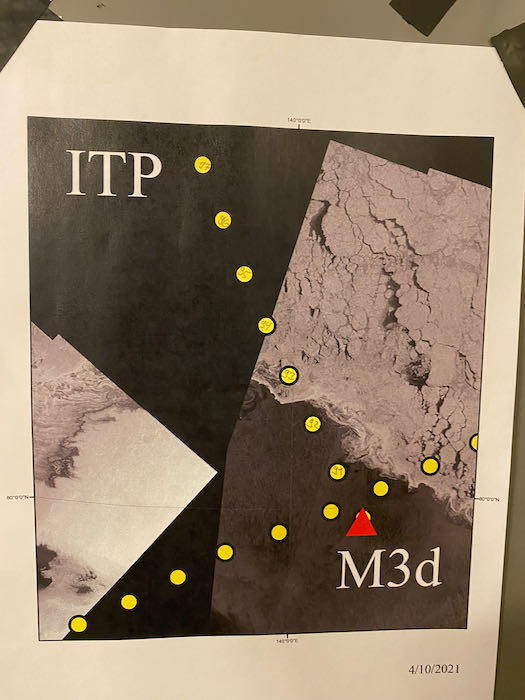Sticking with the theme of songs that get stuck in your head but going waaayyy back to my childhood (Foreigner 1977), I wanted to highlight the work of the Japanese, Danish, and Russian ice teams.
The Japanese science team collaborated with the Danish scientist to take other ice measurements. Naoya Kanna of the University of Tokyo and Kazutaka (Kazu) Tateyama of the Kitami Institute of Technology in Hokkaido (the northernmost national university in the country) have been regularly sampling surface water from the side of the ship. Like the chemistry group, they are testing for nutrients, trace metals and dissolved organic content, but instead of using the rosette, they sample from directly under ice floes.


During the ice stations, they, along with Danish scientist Maria Papadimitraki, also drilled into the ice; however, they removed sections called ice cores and will test them for density, nutrients, salinity, and dissolved organic carbon back in the lab.

While this was happening, they used a machine called a PMR (passive microwave radiometer) to measure the "microwave emission" (not microwave oven, but somewhat related) of the ice, which can be used to calculate thickness in various places. This instrument detects microwave radiation emitted (given off) from the Earth's surface, depending on that surface's structure. Open water gives off low energy radiation while ice emits much higher levels.

The Russian ice team does a great deal of work on the bridge of the ship. They receive satellite images of the ice and help reconcile these images (sometimes several days old) with the current ice conditions. They are also responsible for helping the captain navigate to find the best areas for ice stations and to avoid thick sea ice along our ship track.

Once out on the ice, this team also drilled holes (some of them with a hand cranked drill, rather than a power drill) and took CTDA research tool that is submerged in the water to measure conductivity (salinity), temperature, and depth. (conductivity, temperature, and depth) measurements from directly under the ice. This type of data can be used to assess changing ice conditions in the Arctic.



Comments